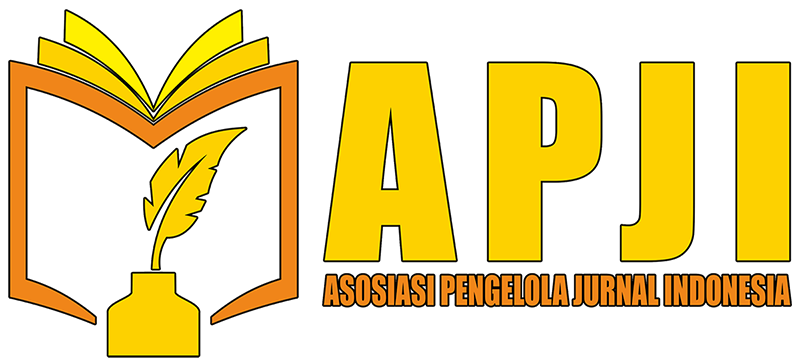Storytelling Dolls Reduce Children's Anxiety During Hospitalization
Abstract
Background: Typhoid fever or typhus abdominalis is an acute infectious disease caused by the bacteria Salmonella typhi. Typhoid fever in children can cause death in Indonesia. Typhoid disease has become an endemic public health threat because the spread of this disease increases the number of people infected and increases drug resistance, making prevention and treatment efforts more difficult. Often children who are treated in hospital experience hospitalization. One way to deal with hospitalization in children is by using distraction techniques.
Objective: The aim of the case study is that researchers are able to carry out nursing implementation of distraction techniques: dolls to reduce anxiety in children with typhoid fever.
Method: This research design uses a descriptive research design in the form of a case study. Data collection techniques include interviews, observation and using the SLKI checklist. Two respondents took cases, namely typhoid fever patients with anxiety at the Siti Fatimah Regional Hospital, Palembang.
Results: Nursing Implementation of Distraction Technique: The doll showed a decrease in the level of anxiety in patients 1 and 2 with the results of decreased verbalization of confusion, decreased verbalization of worry about the condition at hand, decreased restless behavior, decreased tense behavior, improved concentration, improved sleep patterns, improved eye contact.
Conclusion: The nursing implementation provided is in the form of distraction techniques: dolls are effective in reducing anxiety in children.
Downloads
References
Dinkes Prov Sumsel. (2022). Building a Healthy and Advanced South Sumatra for All. Health Profile of South Sumatra Province 2021, 259. www.dinkes.sumselprov.go.id.
Hidayat, A. N., & Asti, A. D. (2021). Hand Puppet Therapy to Reduce Anxiety in Children Due to the Effects of Hospitalization. Proceeding of The URECOL, 63–68.
Mertajaya, I Made. (2018). I Made Mertajaya 46. JKFT Journal: Universitas Muhammadiyah Tangerang, 3, 46–58.
Nur Oktavia Hidayati, Sutisnu, A. A., & Nurhidayah, I. (2021). The Effectiveness of Play Therapy on Anxiety Levels in Children Undergoing Hospitalization. BSI Nursing Journal, 9(1), 61–67.
PPNI. (2018). Indonesian Nursing Intervention Standards. Jakarta: DPP PPNI.
Ramaningrum, G., Anggraheny, H. D., & Putri, T. P. (2017). Factors Affecting The occurrence of typhoid fever in children at RSUD Tugurejo Semarang. Faculty of Medicine, Universitas Muhammadiyah Semarang, 10(2), 1–8.
Rianti, E., & Sukmawati, A. (2023). Case Study: The Application of Music Therapy to Anxiety Levels in Children Undergoing Invasive Procedures During Hospitalization. Global Health Science, 3(4), 394–399.
Riskesdas RI. (2018). Report on South Sumatra Province. Publishing Agency of the Health Research and Development Agency, 19(9), 1–7.
http://ejournal2.litbang.kemkes.go.id/index.php/lpb/article/view/3665
Saifudin, I., Wirakhmi, I. N., & Haniyah, S. (2022). Description of Parental Assistance on Preschool Children's Anxiety During Hospitalization at Orthopaedic Hospital Purwokerto. National Seminar on Research and Community Service (SNPPKM), 2(1), 445–452.
Sutarmi, S., Musyarofah, S., Warijan, W., Indrayana, T., & Siswanto, J. (2023). Effectiveness of Puzzle Play Therapy to Reduce Anxiety: A Case Study in Pre-School Age Children Undergoing Chemotherapy at Dr. Kariadi Hospital, Semarang. Jurnal Studi Keperawatan, 4(2), 20–24. https://doi.org/10.31983/j-sikep.v4i2.10323
Verliani, H., Laily Hilmi, I., Singaperbangsa Karawang, U., HSRonggo Waluyo, J., Karawang, T., & Barat, J. (2022). Risk Factors for Typhoid Fever Incidence in Indonesia 2018–2022: A Literature Review. JUKEJ: Jurnal Kesehatan Jompa, 1(2), 144–154.
Copyright (c) 2024 Yunike, Jawiah, Khairun Nisa Febrianti

This work is licensed under a Creative Commons Attribution-NonCommercial-NoDerivatives 4.0 International License.
Copyright and License Statement
By submitting a manuscript to the Journal of Applied Holistic Nursing Science, the author agrees to this policy. No specific document approval is required.
Copyright:
Lisensi Creative Commons Atribusi-NonKomersial-BerbagiSerupa 4.0 Internasional
The copyright for any article in the Journal of Applied Holistic Nursing Science is fully held by the author under the Creative Commons CC BY-NC-SA 4.0 license.
1. The copyright of each article belongs to the author.
2. Authors retain all rights to their published work, including but not limited to the rights outlined on this page.
3. The author acknowledges that Journal of Applied Holistic Nursing Science is the first publisher under the Creative Commons Attribution 4.0 International License (CC BY-NC-SA-4.0).
4. Authors may separately submit their work, arrange for non-exclusive distribution of the manuscript previously published in this journal into other versions (e.g., submission to the author's institutional repository, publication in books, etc.), with acknowledgment that the manuscript was first published in Journal of Applied Holistic Nursing Science
5. The author guarantees that the original article, written by the authors named, has not been previously published, does not contain statements that are illegal, does not infringe upon the rights of others, and is subject to copyright exclusively held by the authors.
6. If the article is co-authored by more than one author, each submitting author guarantees that they have been authorized by all co-authors to agree to the copyright and licensing notice (agreement) on their behalf and agrees to inform co-authors of the terms of this policy.Journal of Applied Holistic Nursing Science will not be held liable for any issues arising from internal disputes between authors.
License:
Journal of Applied Holistic Nursing Science is published under the terms of the Creative Commons Attribution-NonCommercial-ShareAlike 4.0 International License (CC BY-NC-SA 4.0). This license allows anyone to:
Copy and redistribute the material in any medium or format, and remix, transform, and build upon the material, even for commercial purposes, as long as they credit the author for the original creation.





















